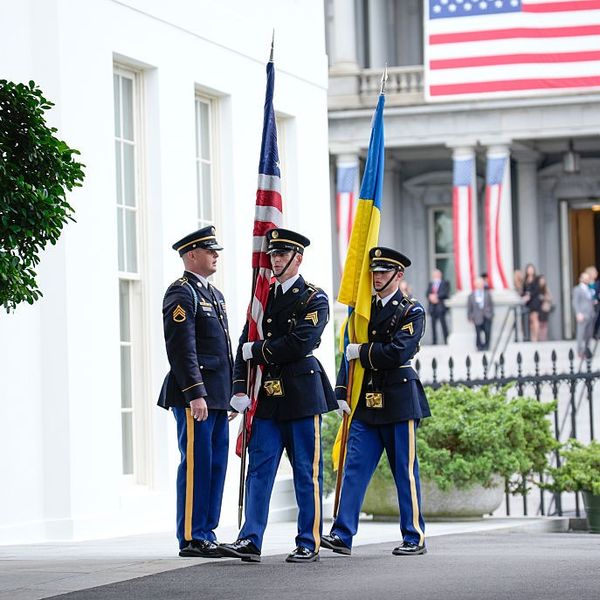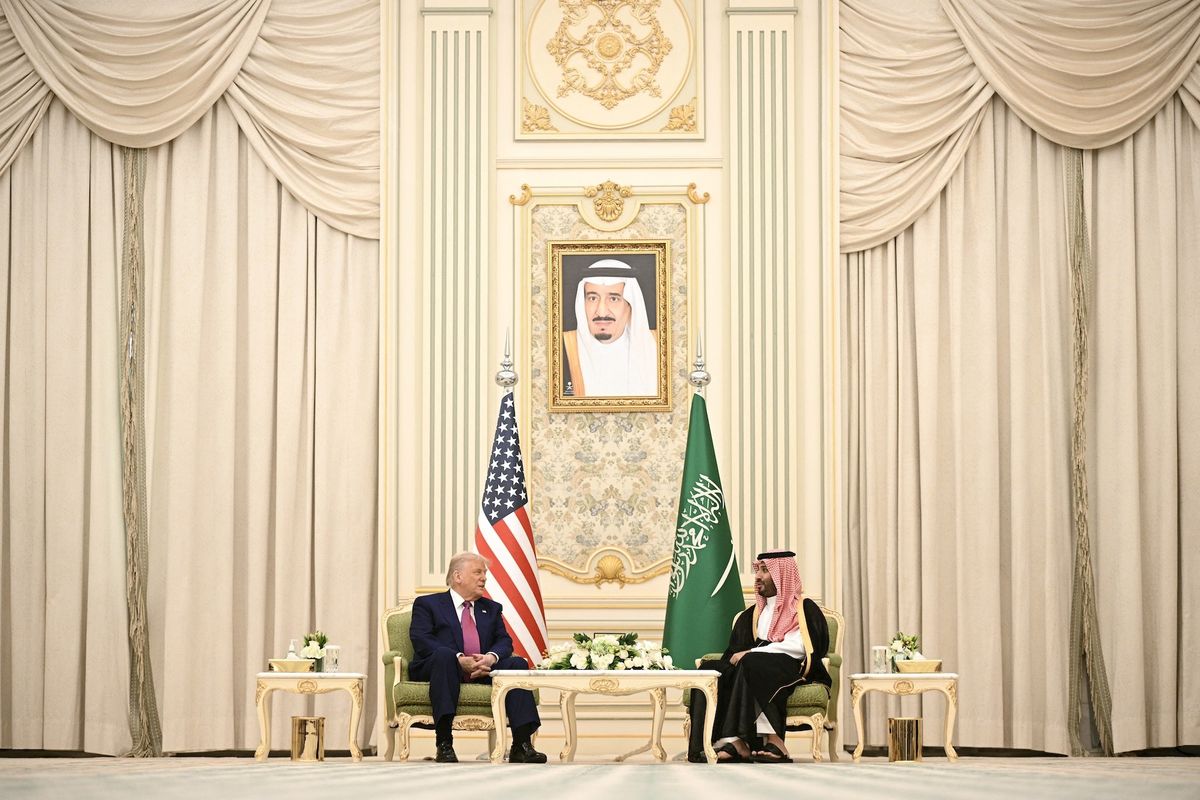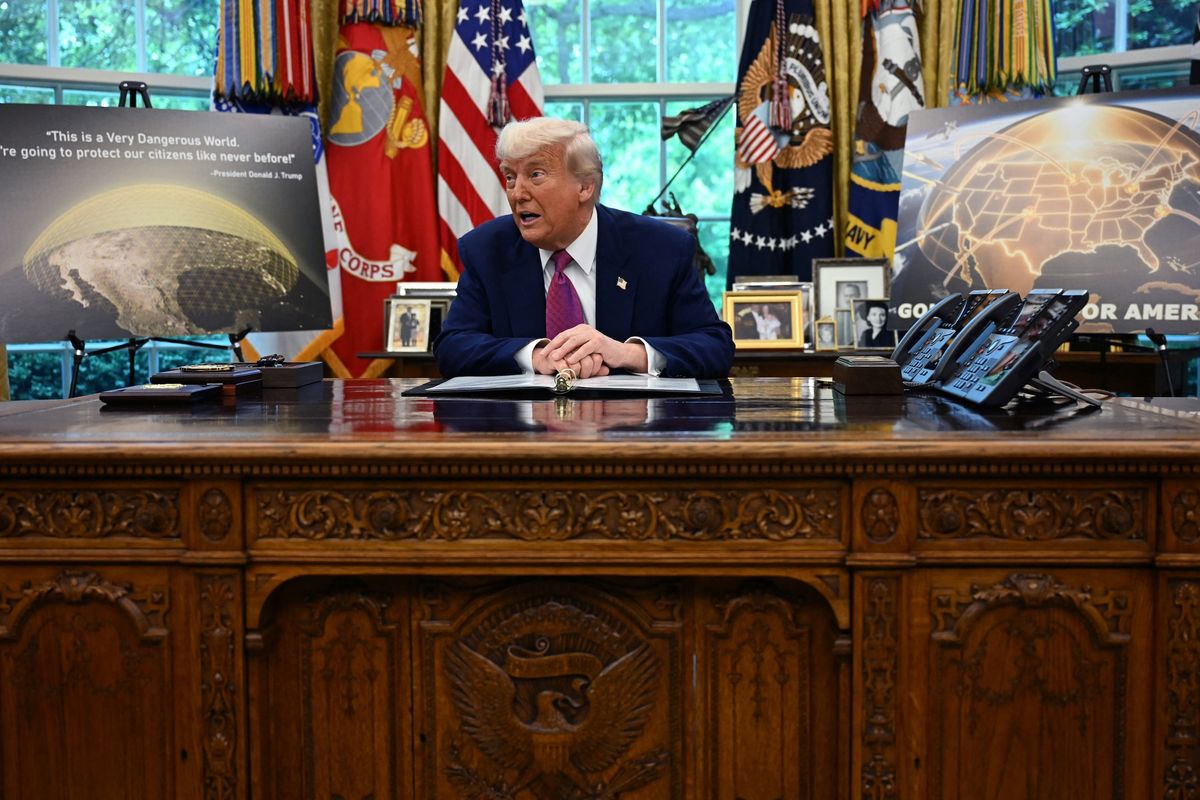OPINION — This past March and April, US Naval Forces attached to Central Command carried out live fire exercises in the North Persian Gulf’s international waters near Iran, using Army Apache helicopters and AC-130 gunships to practice defense against threats from swarming Iranian speedboats.
Such a US exercise was underway on April 15, when 11 armed speedboats operated by the Iranian Islamic Revolutionary Guard Corps came within close range of six US Navy vessels including the USS Lewis B. Puller, an expeditionary mobile base vessel from which the Apache helicopters were landing and taking off. The US Coast Guard patrol boat Maui was among the accompanying ships that “identified simulated targets for the attack helicopters to engage,” according to an April 15, 2020 press release from the US' 5th Fleet Public Affairs.
For one hour, the Iranian speedboats “repeatedly crossed the bows and sterns of the US vessels at extremely close range and high speeds, including multiple crossings of the Puller with a 50-yard closest point of approach and within 10 yards of Maui's bow,” according to the 5th Fleet Public Affairs release.
While most U.S. and world attention is focused on fighting the Covid-19 virus, American military units around the world are carrying out similar exercises, some in potential military hotspots such as the North Persian Gulf off the coast of Iran, and others in the South China Sea.
Any one of these activities, which deployed American military forces regularly undertake, could result in a miscalculation on one side or another, and perhaps lead to real fighting.
That was the background for President Trump’s tweet at 8:08 a.m. on the morning of April 22, 30 minutes after seeing video of the April 15 event on Fox & Friends. "I have instructed the United States Navy to shoot down and destroy any and all Iranian gunboats if they harass our ships at sea," he tweeted.
The next day, Deputy Defense Secretary David L. Norquist told Pentagon reporters that Trump’s instantaneous tweet was “an important warning to the Iranians.” Joint Chiefs Vice Chairman Gen. John E. Hyten took it a step further, calling it a “clear direction from the Commander-in-Chief” that “we, as the military, have to apply…into lawful orders that we execute.”
The US is not alone in carrying out potentially dangerous exercises in that already tense area.
Late last December, Iranian Navy vessels, along with vessels from Russia and China held four days of unprecedented naval exercises in the Sea of Oman, just north of the Persian Gulf. They were operating near the Strait of Hormuz, the narrow sea lane through which oil from that region travels to open oceans and countries around the world. Although these three-power exercises were described as relatively simple tactical operations, they did include live-fire drills and Iranian commandos boarding surface vessels. The Deputy Commander of Iran's Army for Coordination, Rear Admiral Habibollah Sayyari said at a press conference on December 28, 2019, that the joint maritime maneuvers of Iran, Russian and Chinese “demonstrate Iran's military's capability and authority both in the region and in the world." As the exercises ended, Iranian Rear Admiral Hossein Khanzadi said on Iran’s state television, “Today, the era of American free action in the region is over, and [US forces] must leave the region gradually” because of a “new triangle of sea power” in the region.
In the wake of the January 3, 2020, US assassination of Iranian Gen. Qassem Soleimani and the Iran response with a missile attack on US troops in Iraq, additional American forces were sent to the area and new exercises began. On March 8 and 9, 2020, US Navy elements held “a first of its kind joint exercise” with Special Operations Command AC-130W Stinger II gunships in the Persian Gulf along with Navy P-8 aircraft performing long-range reconnaissance. “This exercise marks the first time these assets have been integrated in direct support of maritime security operations in the Arabian [Persian] Gulf,” according to a March 15 release by 5th Fleet Public Affairs.
The joint forces working together “represents another key capability in our ongoing integration of naval and air assets across our joint and coalition force to ensure maritime superiority,” said Vice Adm. Jim Malloy, commander of Navy forces attached to Central Command. On April 1, Central Command announced an additional element had been added that saw US Army AH-64E Apache attack helicopters beginning to operate off the USS Puller in the Persian Gulf.
After the April 15 incident with Iranian speedboats, Navy Central Command announced on April 21, that it had continued live fire exercises from April 16 to April 19 in the North Persian Gulf. It quoted Navy Capt. Peter Mirisola, commander of a destroyer group operating in the area, saying, “By using the interoperability they’ve developed with Army and Air Force platforms, our forward deployed naval forces can exercise sea control and project power regardless of what other Navy assets are present in theater.”
Russia took notice of US-Iran military activities in the Persian Gulf last Wednesday. Foreign Ministry Spokeswoman Maria Zakharova told reporters, “We urge the sides to exercise maximum restraint and caution, not to fall for provocations and aggressive rhetoric, and to act strictly in accordance with international norms and rules.” She said Moscow "understands Tehran's harsh criticism of American military," who, "as has been said, conducted provocative dangerous maneuvers near the Iranian coast in the Persian Gulf on April 15."
The Persian Gulf is not the only area where military exercises could create problems. At the same time that President Trump is stepping up criticism of China for the Covid-19 pandemic, the US is increasing Navy activities in the South China Sea. Last Friday, Defense Department Spokesman Jonathan Hoffman told reporters that the USS Barry and the USS Bunker Hill had recently carried out two freedom-of-navigation operations in the South China Sea at times and places of US choosing.
However, for the first time, the Chinese Army theater command called the destroyer Barry’s passage on April 28, near the Paracel Islands “illegal,” and called up sea and air patrols to confront the ship. Hoffman said he saw no “uptick” in the Chinese response and a Navy spokesman told reporters that the Chinese vessels and aircraft did not create “any unsafe or unprofessional behavior.”
The guided-missile cruiser Bunker Hill had earlier operated with the amphibious assault ship USS America in the South China Sea where a Malaysian oil drilling ship had been exploring potential sites in an ocean economic zone claimed by Malaysia, although Vietnam and China had made similar claims.
The American warships had been sent to the area April 20, after a Chinese surveyor vessel, guarded by Chinese navy and coast guard vessels, arrived near the Malaysian vessel.
In an April 23 statement, Secretary of State Mike Pompeo accused China of dispatching “a flotilla that included an energy survey vessel for the sole purpose of intimidating other claimants from engaging in offshore hydrocarbon development.”
Without mentioning the US warships, Pompeo said, “The US strongly opposes China’s bullying and we hope other nations will hold them to account too.”
Last Thursday, two B-1 strategic bombers conducted operations over the South China Sea as an element in a 32-hour round trip from their home at Ellsworth Air Force Base, S.D. It was part of a joint mission with U.S. Indo Pacific Command to reaffirm persistent American bomber presence in a contested area that first began in 2014 under the Obama administration.
U.S. military forces have the right to carry out live fire exercises in international waters, but when done in regions where tensions are growing, care should be taken to make certain they cannot lead to an open conflagration.
Read more expert-driven insights, perspective and analysis in The Cipher Brief












